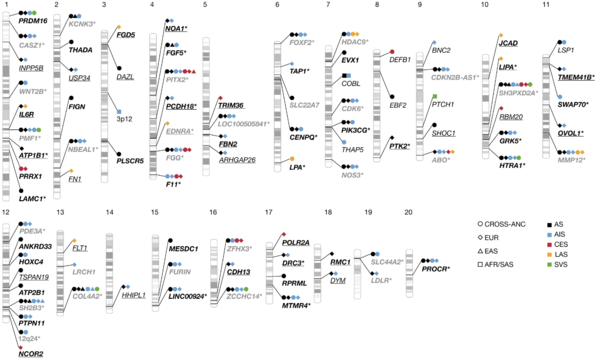A multinational research team including Professor Bae Hee-joon of Seoul National University Bundang Hospital (SNUBH) found that ancestry specific stroke genetic risk factors strongly predicted ischemic stroke in European, East Asian and African ancestry.

Genome-wide association studies (GWASs) identify genomic variants that are statistically at risk for a disease or trait. It surveys the genomes of many people for genomic variants that occur more frequently in those with a specific disease or trait. Subsequently, it is used to search for nearby variants that contribute directly to this disease or trait.
The study was conducted as part of the "GIGASTROKE Project" by the International Stroke Genetics Consortium (ISGC), and the researchers analyzed more than 2.7 million GWASs to discover 89 genetic mutations. Compared to the previous "MEGASTROKE Project" in 2018, 67 more mutations were found.

Additionally, the researchers improved the polygenic risk score (PRS) by using genetic data of multiple races compared to the previous model with only European genetic data, enabling stroke risk prediction among various races. Comparatively, the stroke onset prediction improved by 93 percent, and the stroke risk was 2.5 times higher than the average, especially if the PRS was in the top 1 percent.
According to SNUBH, the rearch team also confirmed that this genetic information can also be used to prevent and treat stroke. In this regard, six drug targets namely F11, KLKB1, PROC, GP1BA, LAMC2, and CAM1 were identified as potential drugs for stroke treatment based on the discovered genetic mutations.
Particularly, this study used Korean genetic data which was not previously reflected. The genes of 1,120 stroke patients from 17 hospitals were collected and analyzed by researchers from Clinical Research Collaboration for Stroke in Korea National Institutes of Health Center (CRCS-K-NIH).
"The existing research had limited applications to Europeans, but it is important that Korean genetic data is also now reflected in this GIGASTROKE project," Professor Bae Hee-joon said, "We will continue our research to discover genetic mutations which are specific to Koreans."

